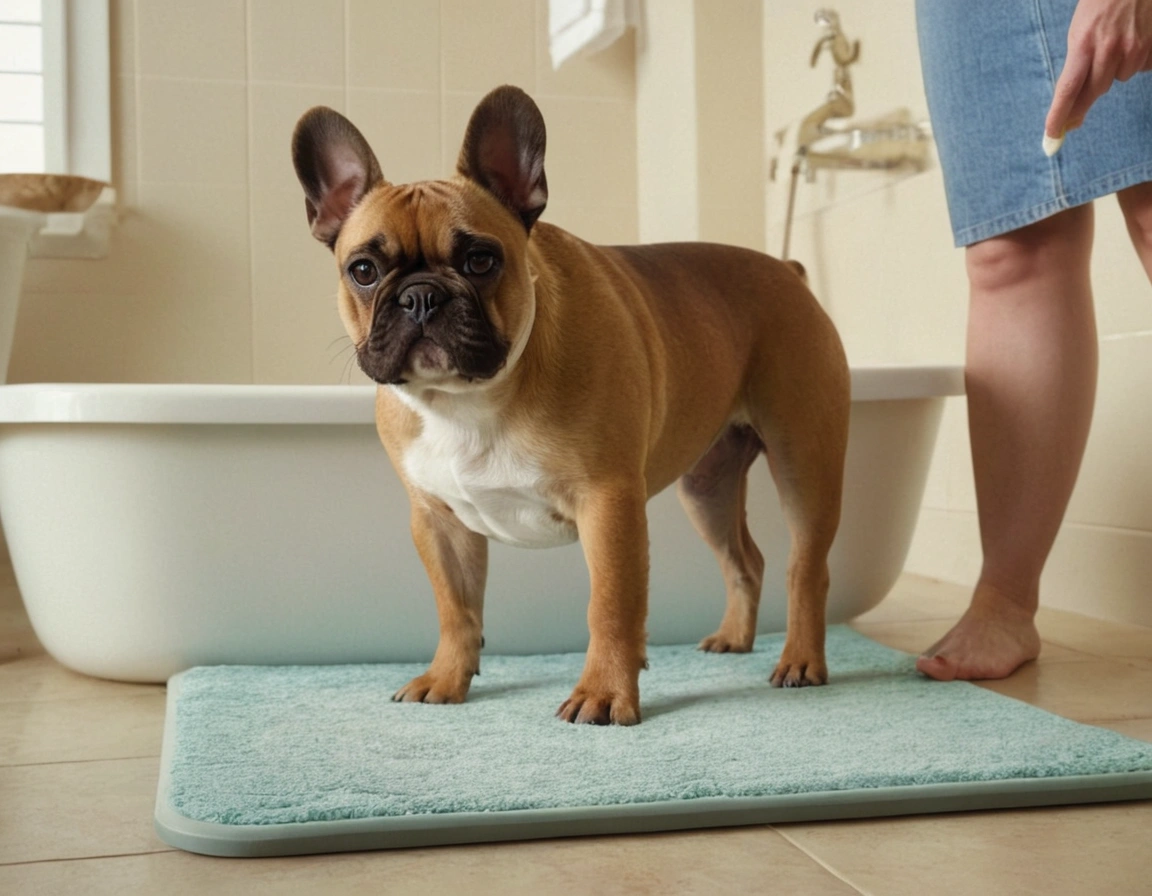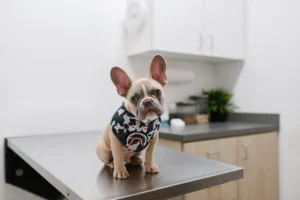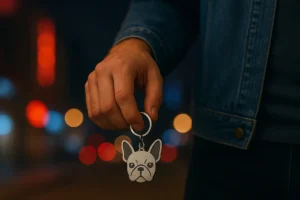Quick answer
A neglected pocket beneath a Frenchie’s tail traps moisture, debris, and microbes. This friendly, vet-backed guide explains what that recess is, how to spot trouble early, and how to set a quick, calm routine that protects sensitive skin. Expect clear steps, safety notes, and product tips so cleaning feels easy—and your companion stays comfortable between grooming visits.
What is it and why it matters
What it is and why it matters
A French Bulldog’s tail pocket is a tiny crease under the tail that traps sweat, grime, and fecal particles, creating an ideal setting for irritation. You may also encounter the terms “tail pocket French bulldog” or “French bulldog tail fold,” both referring to the same area. If not addressed, this micro‑environment can lead to redness, itching, and infection, especially during damp weather or after a dirty romp outdoors.
How often should owners clean it?
The ideal cleaning schedule for a Frenchie’s tail pocket varies per dog, but most owners find a weekly inspection sufficient. Increase the frequency during damp weather, after a bout of diarrhea, or while training a puppy that still lounges in wet grass. If you’re unsure how to clean the French bulldog’s tail pocket safely, keep the process gentle, quick, and consistent—while watching for any changes in comfort or odor.
Supplies checklist (vet-friendly)
Supplies are simple
- Soft pads
- Lukewarm water or saline
- Antiseptic wipes approved for pets if your vet suggests them
Select fragrance‑free, hypoallergenic options and skip scents that cause stinging. When reviewing the best tail‑pocket wipes, focus on dog skin‑fold cleaning claims, clear ingredient disclosures, and packaging that keeps the pads moist.
Step-by-step cleaning
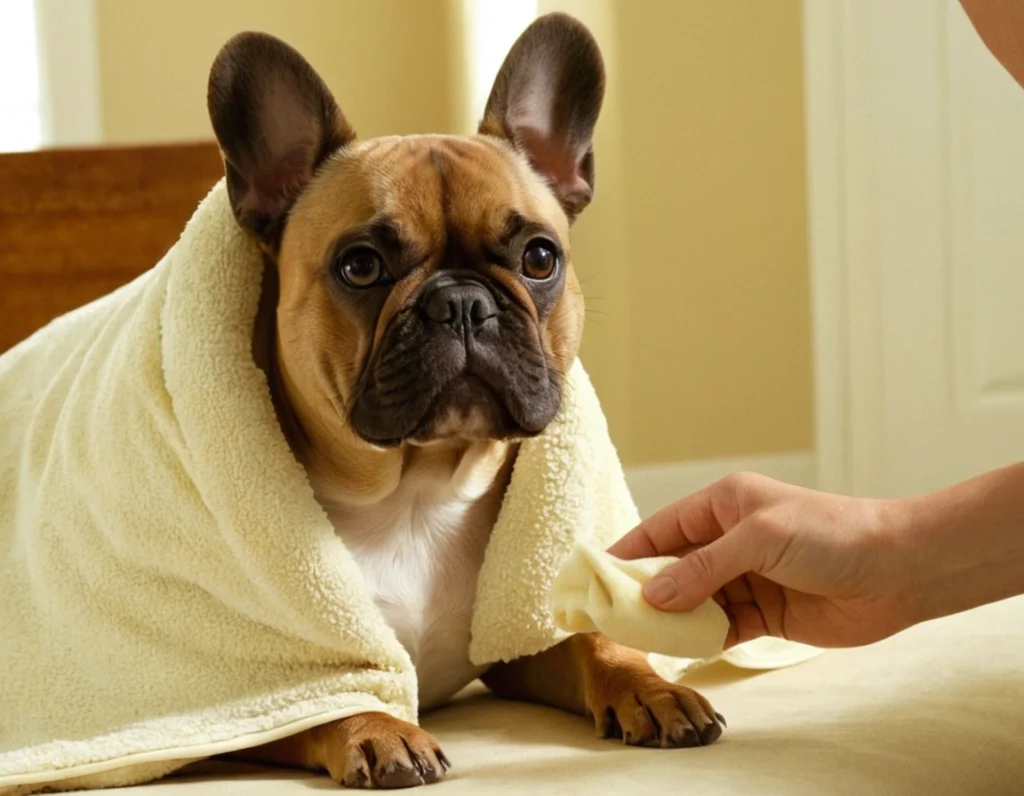
Step‑by‑step: lift the area gently—avoid tugging on stiff tails—wipe the groove from the edge toward the center, then rinse away any leftover cleanser. Pat it completely dry with a clean pad; this one habit wards off most problems. If dampness reappears after a bath, re‑examine how you’re drying the tail‑pocket surfaces and give a quick pat later that same day to keep everything comfortable.
Red-flags & when to see the vet
Know tail pocket infection signs: thick discharge, a strong smell, constant licking, scooting, or pain when touched. If you see bleeding, the response is simple—stop any home care and phone your clinic or veterinary doctor for same‑day advice.
Tips that help across breeds
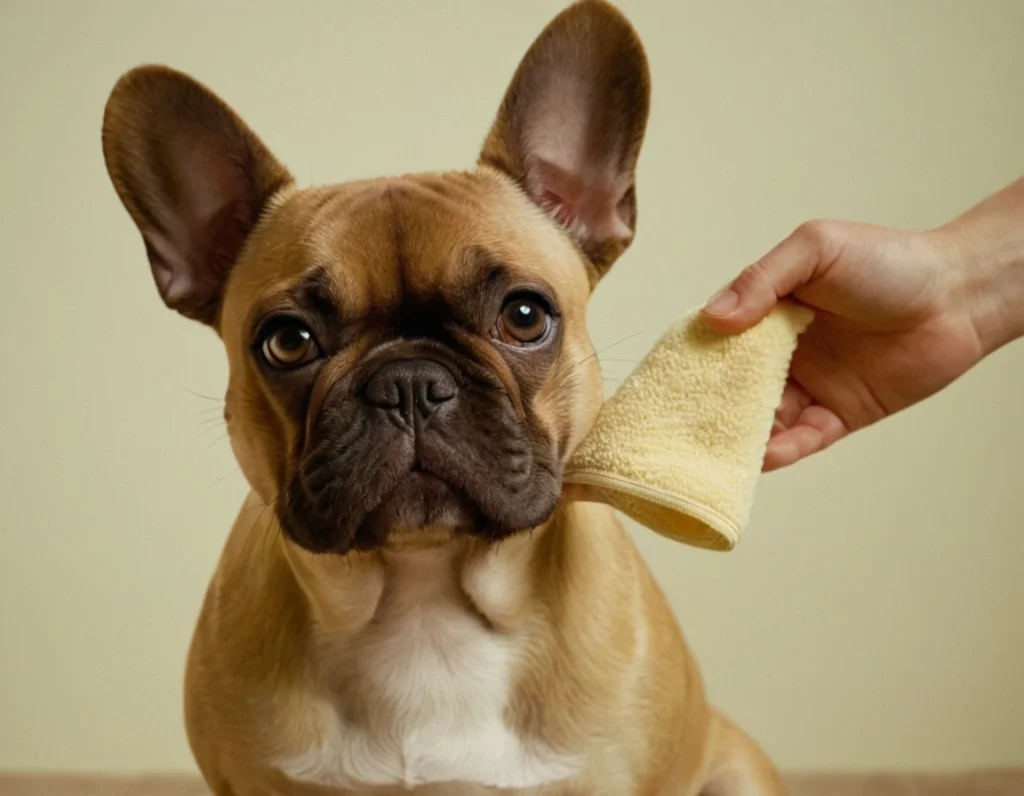
These basics also lower the risk of tail‑fold infections in dogs beyond just one breed. Owners of dogs with a comparable build can adjust the routine by picking pads that suit their pet’s size and by keeping the sessions short. Even if search results often focus on cleaning the French Bulldog’s tail pocket, the same guidelines hold true for other breeds with similar anatomy and climate‑related challenges.
Common questions
A frequent query is whether you can use baby wipes on dogs for this task. If a veterinarian gives the green light, choose fragrance‑free formulas and steer clear of alcohol; ideally, opt for wipes made specifically for pets. In short, the safest approach ends with a gentle, cool pat‑down and a calm treat, avoiding vigorous rubbing or potent scents.
Handy reference table
| Situation | What to do | Why it matters |
|---|---|---|
| Mild odor, light debris | Gentle clean, then pat fully dry; recheck in 24 hours | Trapped moisture encourages skin-fold rash; drying helps prevent overgrowth. |
| Recurrent redness/itch | Vet exam; cytology/culture; targeted therapy | Different microbes need specific treatments; testing guides care. |
| Pain, discharge, or bleeding | Stop home care; same-day clinic visit | Could be a fold infection or deeper issue needing medication. |
Sources & next steps
For deeper reading, PDSA explains prevention and symptoms clearly, while MSPCA Angell outlines screw-tail surgery basics. VCA Animal Hospitals covers bacterial skin infections and allergy links that complicate healing, and the MSD Veterinary Manual summarizes dermatitis categories. Together, these sources reinforce gentle routines and timely exams when home care fails or infections return.
Conclusion
In short, establish a relaxed weekly schedule, use mild products, and monitor results after each wash. Pay extra attention during damp conditions, and schedule a vet visit when red flags appear. Many owners notice that tiny, consistent habits avoid setbacks, maintain comfort, and keep delicate tails healthy year‑round without turning grooming into a constant battle. Always seek advice from a qualified veterinarian for any health concerns.
References
- PDSA—Skin fold dermatitis in dogs: https://www.pdsa.org.uk/pet-help-and-advice/pet-health-hub/conditions/skin-fold-dermatitis-in-dogs
- MSPCA-Angell—Tail Fold Intertrigo (Screw Tail): https://www.mspca.org/angell_services/tail-fold-intertrigo-screw-tail/
- MSD Veterinary Manual—Dermatologic Problems in Dogs: https://www.msdvetmanual.com/dog-owners/skin-disorders-of-dogs/dermatitis-and-dermatologic-problems-in-dogs
- RVC VetCompass infographic—Skin fold dermatitis risk: https://www.rvc.ac.uk/Media/Default/VetCompass/Infograms/220705%20Skin%20fold%20dermatitis%20infographic%20final.pdf
- Clinician’s Brief—Tail Fold Caudectomy overview: https://www.cliniciansbrief.com/article/surgeons-corner-tail-fold-caudectomy
- Betterpet—How to clean a dog’s tail pocket (step-by-step): https://www.betterpet.com/learn/how-to-clean-your-dogs-tail-pocket
